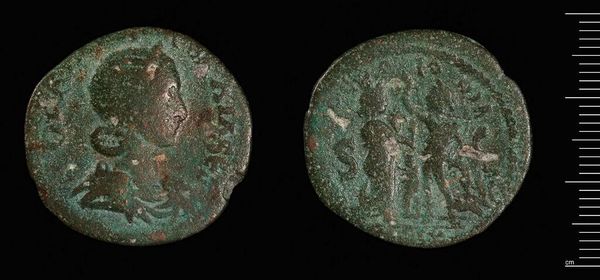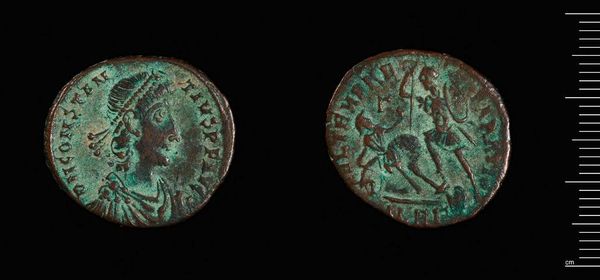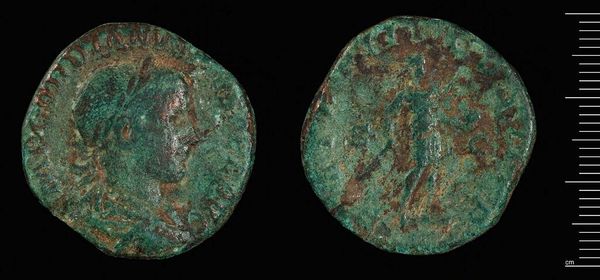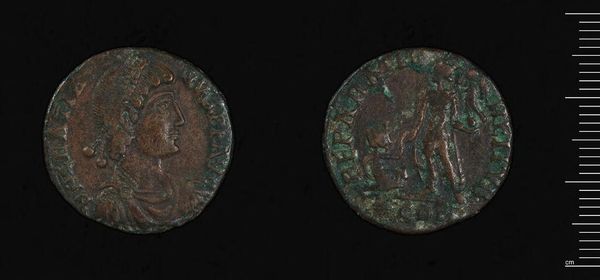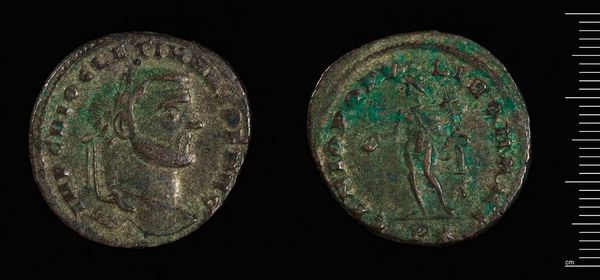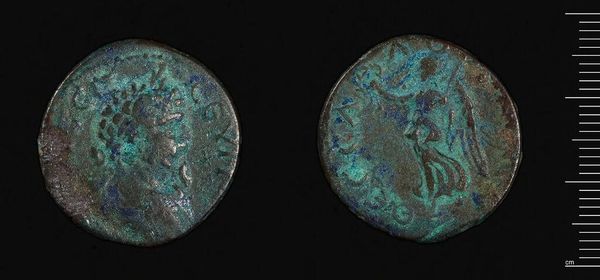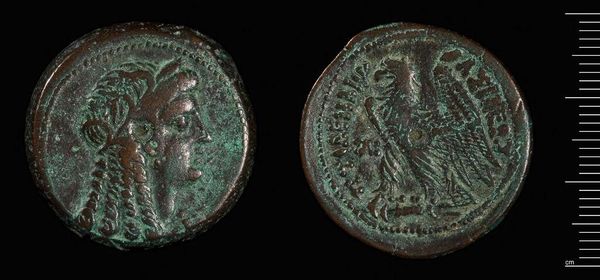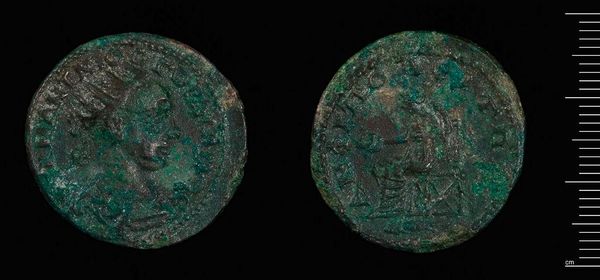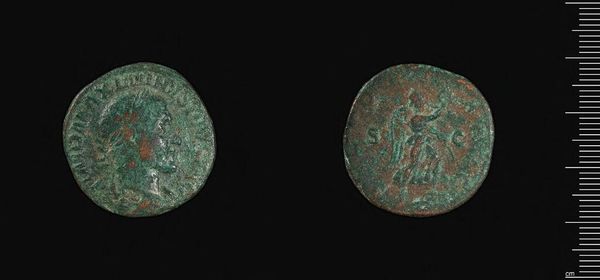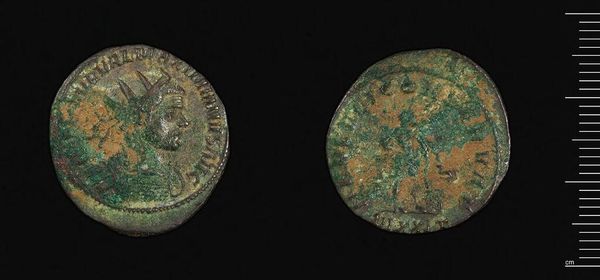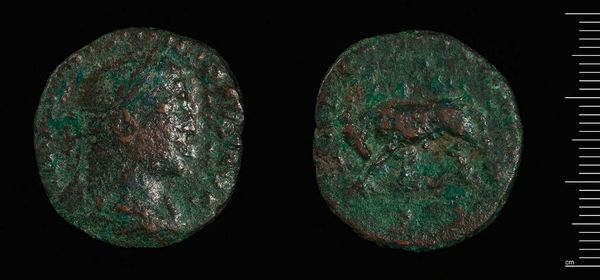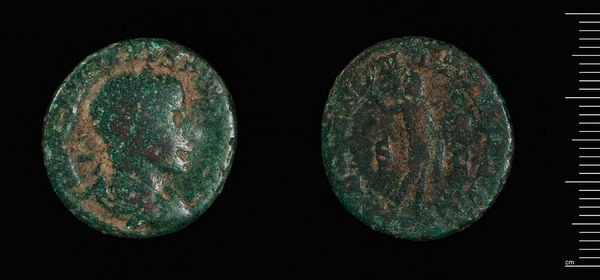
Dimensions: 9.23 g
Copyright: CC0 1.0
Curator: Let's turn our attention to this fascinating "Follis of Diocletian, Serdica", housed here at the Harvard Art Museums. Editor: What strikes me immediately is its weathered appearance. It speaks of resilience, a tangible link to a distant past. Curator: Absolutely. As a material historian, I find the patinated bronze speaks volumes. The coin, essentially money, illustrates the labor and resources poured into the Roman economy under Diocletian. Editor: And the imagery is equally telling. The figure of Diocletian himself is potent symbol of authority, but I also see Mars, a symbol of Roman strength. The coin is dense with iconography intended to project power. Curator: Precisely. It was made in Serdica, modern Sofia, a key minting location. The very act of striking coins legitimized his rule. Editor: So, in essence, we are holding more than just a piece of metal. It’s a political statement, a tool of propaganda, a physical expression of the emperor’s control. I find it remarkable. Curator: I couldn’t agree more. It encapsulates the economic underpinnings of power and their visual representation.
Comments
No comments
Be the first to comment and join the conversation on the ultimate creative platform.
